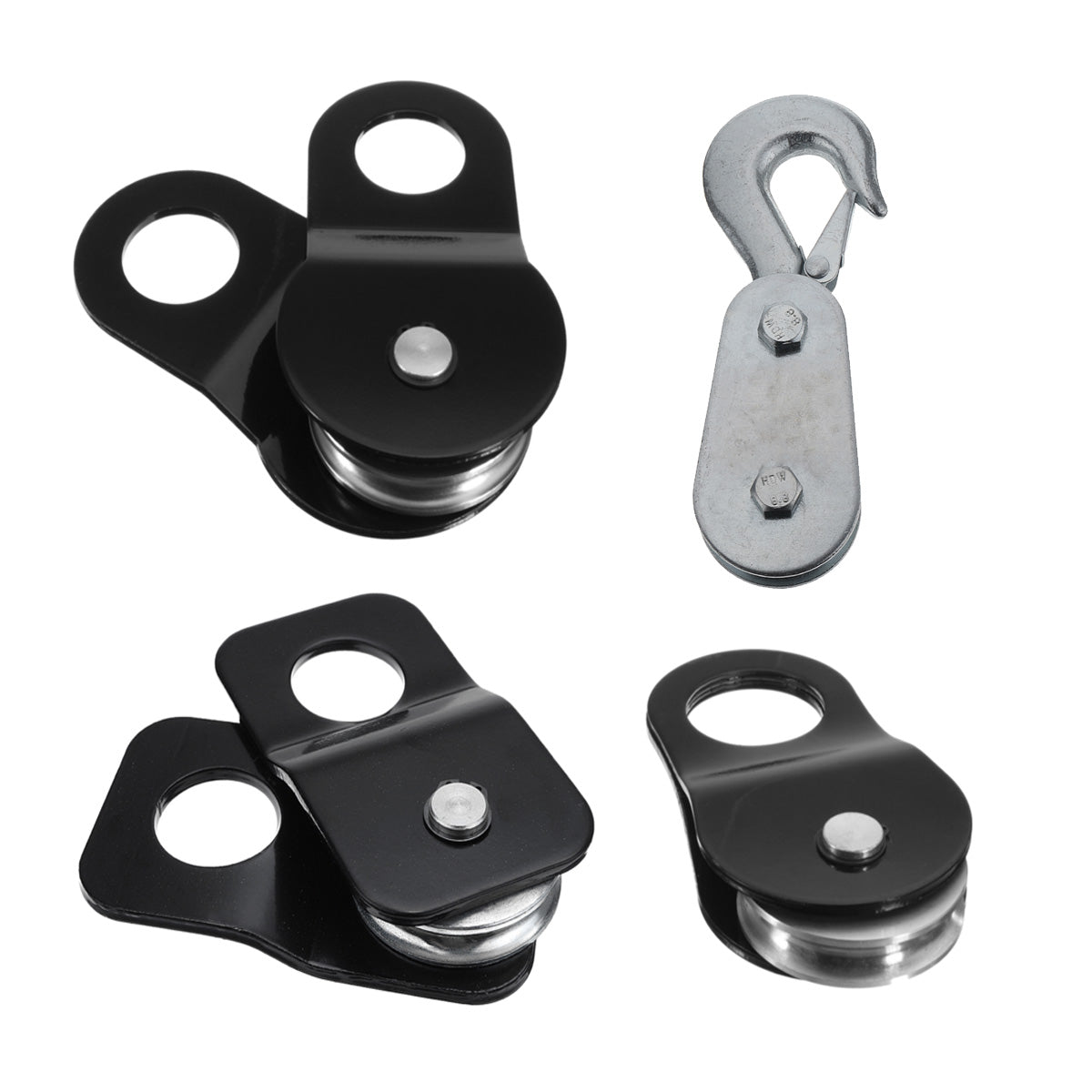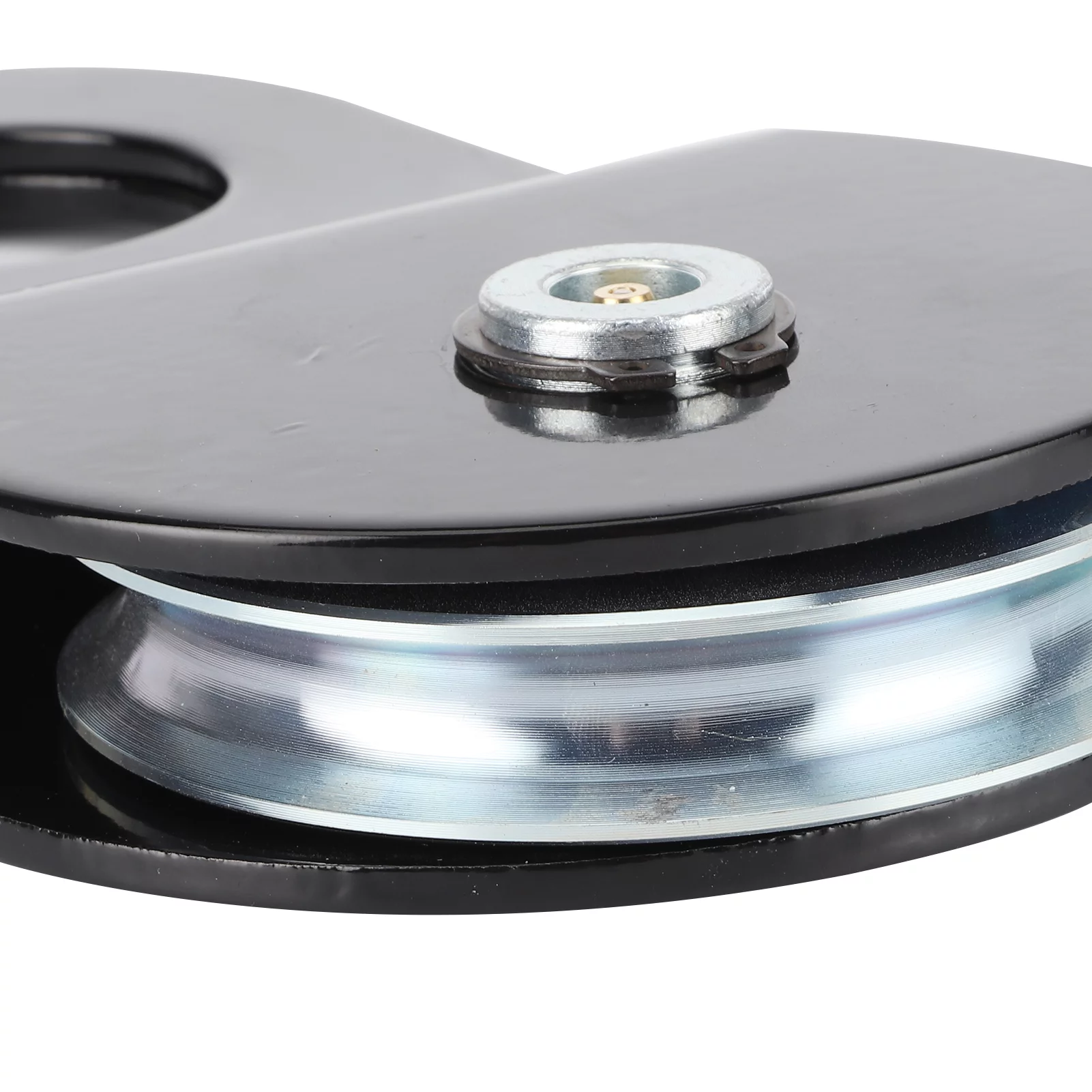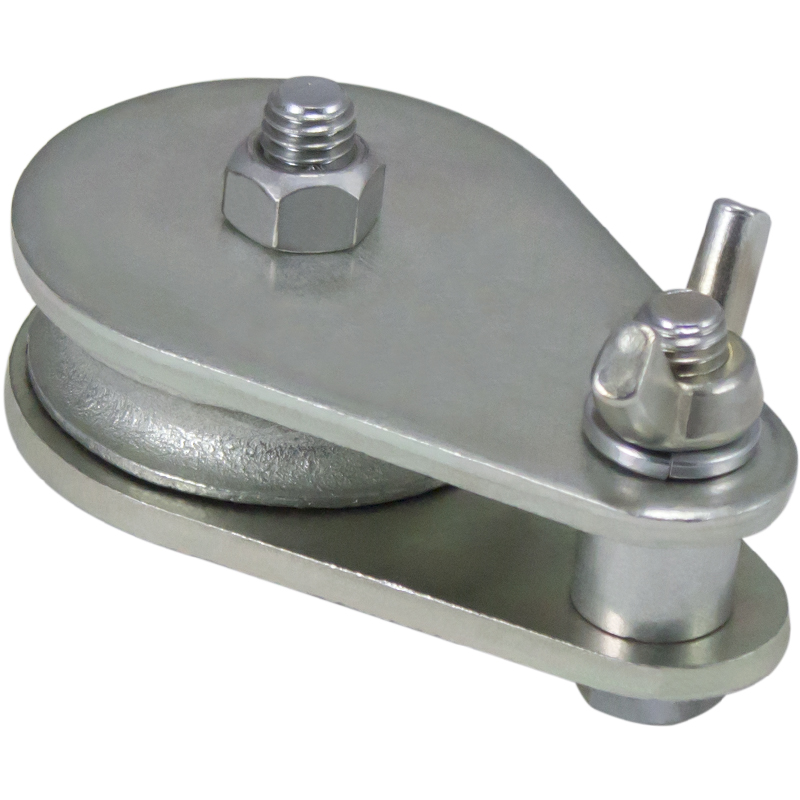Product Description
Double sheave winch crane lifting snatch pulley wheel pulley block
With winch, anchor machine, marine crane and other use, multiply the tension, save costs.
The sheave block can be designed and produced according to the actual needs of the customer, such as tonnage
and wire rope diameter.
The sheave is manufactured according to the diameter of the wire rope and is formed directly by hot rolling process,
making the sliding wheel stronger and lubricated with grease, making it safer in use and having a longer service life
The sheave block can be tested according to the needs of CCS, to provide customers with assured quality and service.
| Model | Rate capacity | Dia. of wire rope | Basic parameter | |||
| D | B | L | H | |||
| D3 | 125 | 15.5 | 200 | 250 | 188 | 546 |
| 200 | 19.5 | 250 | 310 | 208 | 673 | |
| 250 | 21.5 | 285 | 350 | 238 | 744 | |
| 300 | 26.0 | 335 | 410 | 264 | 866 | |
| 400 | 28.0 | 365 | 455 | 290 | 970 | |
| 500 | 32.5 | 420 | 520 | 308 | 1095 | |
| D4 | 250 | 19.5 | 250 | 310 | 264 | 663 |
| 320 | 21.5 | 285 | 350 | 302 | 750 | |
| 400 | 26.0 | 335 | 410 | 335 | 900 | |
| 500 | 28.0 | 365 | 455 | 368 | 1005 | |
| 630 | 32.5 | 400 | 520 | 392 | 1131 | |
| 800 | 34.5 | 450 | 550 | 425 | 1248 | |
/* March 10, 2571 17:59:20 */!function(){function s(e,r){var a,o={};try{e&&e.split(",").forEach(function(e,t){e&&(a=e.match(/(.*?):(.*)$/))&&1
| Type: | Pulley Block |
|---|---|
| Material: | Stainless Steel |
| Number of sheaves: | 4 |
| Control: | Manual |
| Color: | Red or Yellow |
| Application: | Double Beam Crane, Gantry Crane, Bridge Crane, Tower Crane, Single Grinder Crane, Lifting Platform, Boat |
| Customization: |
Available
| Customized Request |
|---|

What maintenance procedures are required to keep winch pulleys in good condition?
To keep winch pulleys in good condition and ensure their optimal performance, several maintenance procedures should be followed. Here is a detailed explanation:
Regular maintenance is essential for the longevity, reliability, and safe operation of winch pulleys. By performing the following maintenance procedures, you can keep winch pulleys in good condition:
- Cleaning: Regularly clean the winch pulleys to remove dirt, debris, and other contaminants that can accumulate over time. Use a soft brush or cloth to gently scrub the pulleys and remove any buildup. Pay special attention to the grooves, sheaves, and bearing areas. Avoid using harsh chemicals that can damage the pulleys or compromise their integrity.
- Inspection: Conduct thorough inspections of the winch pulleys to identify any signs of wear, damage, or defects. Look for cracks, corrosion, bent or broken parts, or excessive wear on the sheaves or bearings. Check the cables, ropes, or straps for fraying, kinks, or signs of weakening. If any issues are detected, repair or replace the affected components promptly.
- Lubrication: Apply appropriate lubrication to the winch pulleys to ensure smooth and efficient operation. Use lubricants recommended by the manufacturer, such as silicone-based or synthetic lubricants. Apply the lubricant to the bearing surfaces, sheaves, and other moving parts as per the manufacturer's guidelines. Avoid over-lubrication, as it can attract dirt and debris.
- Bearing Maintenance: Winch pulleys often have bearings that require maintenance. Check the manufacturer's recommendations for bearing maintenance intervals and procedures. Clean and inspect the bearings regularly, and replace them if signs of wear or damage are present. Ensure that the bearings are properly lubricated to reduce friction and maintain their performance.
- Alignment: Check the alignment of the winch pulleys to ensure they are properly aligned with the cables, ropes, or straps. Misalignment can cause premature wear, increased friction, and reduced efficiency. Adjust the pulleys as necessary to ensure proper alignment and smooth operation.
- Load Testing: Periodically perform load testing to verify the load capacity and performance of the winch pulleys. Follow the manufacturer's guidelines for load testing procedures and use appropriate equipment to apply controlled loads. Load testing helps identify any potential issues with the pulleys and ensures they can safely handle the intended loads.
- Storage: If winch pulleys are not in use for an extended period, store them in a clean and dry environment. Protect them from moisture, extreme temperatures, and corrosive substances. Consider using protective covers or storage containers to prevent dust accumulation and potential damage during storage.
- Manufacturer's Recommendations: Always refer to the manufacturer's recommendations and guidelines for specific maintenance procedures and intervals. Different winch pulleys may have unique maintenance requirements or specific considerations. Adhering to the manufacturer's instructions ensures that the maintenance procedures are appropriate for the particular winch pulleys being used.
By following these maintenance procedures, you can keep winch pulleys in optimal condition, prolong their lifespan, and ensure safe and reliable operation. Regular maintenance not only enhances the performance of winch pulleys but also helps prevent potential failures or accidents during lifting and pulling operations.

How is the size and design of a winch pulley selected for specific applications?
The size and design of a winch pulley are selected based on several factors specific to the intended application. Here is a detailed explanation of how the size and design of a winch pulley are chosen for specific applications:
Load Capacity: The first consideration in selecting a winch pulley is the anticipated load capacity. The pulley must be able to handle the maximum load that will be encountered during the lifting or pulling task. The load capacity is determined based on the weight of the load and any additional factors such as shock loads or dynamic forces that may be present. The pulley should have a load rating that exceeds the expected maximum load to ensure safe and reliable operation.
Wire Rope or Cable Diameter: The size of the winch pulley should be compatible with the diameter of the wire rope or cable that will be used. The pulley sheave should be designed to accommodate the specific diameter of the rope or cable to ensure proper engagement and prevent excessive wear or damage to the rope. It is important to match the pulley size to the rope or cable diameter specified by the manufacturer or industry standards.
Sheave Diameter: The diameter of the sheave, or the wheel of the winch pulley, is another critical factor. The sheave diameter affects the mechanical advantage and the line speed of the winching operation. A larger sheave diameter provides a greater mechanical advantage but reduces the line speed. Conversely, a smaller sheave diameter offers less mechanical advantage but increases the line speed. The selection of the sheave diameter depends on the specific requirements of the application, considering factors such as the desired pulling power, load control, and speed of operation.
Material and Construction: The material and construction of the winch pulley should be chosen based on the environmental conditions and the demands of the application. Common materials for winch pulleys include steel, stainless steel, and high-strength polymers. Steel pulleys offer excellent durability and strength but may be susceptible to corrosion in certain environments. Stainless steel pulleys provide corrosion resistance but may have a higher cost. High-strength polymer pulleys are lightweight and corrosion-resistant, making them suitable for marine or outdoor applications. The pulley design should also account for factors such as bearing type, lubrication, and overall robustness to withstand the anticipated loads and operating conditions.
Application-Specific Requirements: Different applications may have unique requirements that influence the selection of the winch pulley. For example, in marine applications, pulleys designed for saltwater resistance may be required. In off-road recovery scenarios, pulleys with features such as self-cleaning grooves or high-visibility colors may be preferred. It is important to consider any specific requirements or regulations that apply to the intended application and select a winch pulley that meets those criteria.
Manufacturer's Recommendations: Finally, it is crucial to consult the manufacturer's recommendations and specifications for the winch system. The manufacturer can provide guidance on the appropriate pulley size and design based on their product's capabilities and limitations. They may also offer specific pulley options or kits that are optimized for certain applications or winch models.
By considering factors such as load capacity, wire rope or cable diameter, sheave diameter, material and construction, application-specific requirements, and manufacturer's recommendations, the size and design of a winch pulley can be selected to ensure safe and efficient operation in specific applications.

What types of cables or ropes are typically used with winch pulleys?
Winch pulleys are designed to accommodate various types of cables or ropes depending on the specific application and requirements. Here is a detailed explanation of the types of cables or ropes that are typically used with winch pulleys:
- Steel Cable: Steel cables, also known as wire ropes, are commonly used with winch pulleys. They are highly durable, have high tensile strength, and offer excellent resistance to abrasion and cutting. Steel cables are suitable for heavy-duty applications where strong pulling forces and load-bearing capacity are required. They are commonly employed in industries such as construction, mining, and off-road recovery.
- Synthetic Rope: Synthetic ropes made from materials such as high-strength polyethylene (HMPE), nylon, or polyester are becoming increasingly popular in winching applications. Synthetic ropes offer several advantages over steel cables, including lighter weight, flexibility, and easier handling. They are also safer in the event of a rope failure, as they do not store as much energy as steel cables. Synthetic ropes are commonly used in off-road recovery, recreational winching, and marine applications.
- Fiber Rope: Natural fiber ropes, such as manila or sisal, were historically used with winch pulleys but have been largely replaced by steel cables and synthetic ropes in industrial applications. However, fiber ropes are still employed in certain specialized applications or industries where their specific properties are beneficial. For example, they may be used in situations where low conductivity or reduced risk of sparking is important.
- Wire Rope Sling: In some cases, wire rope slings may be used with winch pulleys. Wire rope slings consist of multiple strands of wire rope formed into a loop or sling configuration. They are commonly used for lifting and rigging applications where a flexible and strong sling is required to connect the load to the winch pulley. Wire rope slings offer excellent load-bearing capacity and flexibility.
The selection of the appropriate cable or rope for a winch pulley depends on various factors such as the intended application, load requirements, environmental conditions, and safety considerations. It is important to consider the specific requirements and consult the manufacturer's recommendations to ensure the compatibility and safe use of the cable or rope with the winch pulley.


editor by CX
2023-12-28